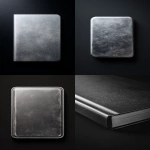Explore the Best AI Image Gallery

On the Frontier: Edge Computing Applications in the Creative World
The current digital revolution is marked by the rise of Edge Computing, a promising technology that implies processing data closer to the source of generation rather than relying on a centralized cloud-based system. The ripple effects of this milestone are being felt across various sectors, including the creative industry. This blog post will explore the potential applications, ethical considerations, and future trends of Edge Computing.
Potential Applications
Edge Computing is gradually shaping the creative industry by providing real-time data processing capabilities, this low-latency advantage enables more interactive and immersive experiences across various creative fronts. For instance, in virtual reality (VR) and augmented reality (AR), the boon of Edge Computing can be seen in creating highly responsive and realistic environments unmarred by lag.
In the film industry, Edge Computing can expedite the process of rendering high-resolution graphics enabling quicker turnarounds. Moreover, its application in the domain of internet-connected devices, popularly known as the Internet of Things (IoT), enhances real-time interaction, interoperability and automation of digital and physical entities, thus fostering innovative possibilities in interactive art installations and performances.
Ethical Considerations
Despite the myriad benefits, Edge Computing also brings along new challenges with respect to ethics and data privacy. Owing to its decentralized nature, Edge Computing poses inherent risks on the lines of data misuse and breaches. Content creators, developers and businesses using Edge Computing technologies need to prioritize the ethical handling of data, implement robust security measures for ensuring privacy, and maintain transparency with the consumer on data usage policies.
Future Trends
As we stride towards a future increasingly reliant on digital technology, Edge Computing will likely gain mainstay across industries. In the creative circle, the fusion of Edge Computing with AI (Artificial Intelligence) and machine learning can potentially revolutionize personalization and user experiences in entertainment and media. Additionally, the integration of this technology with 5G promises a realm of untapped opportunities in creating superfast, high-quality content.
Furthermore, the implementation of Edge Computing in wearable technology can introduce breakthroughs in creating immersive interactive experiences, adding a completely new dimension to the way we consume art and entertainment.
To conclude, Edge Computing carries the potential to transform the creative world by streamlining processes, improving efficiency and fostering innovation - which forms the heartbeat of the creative industry. However, its adoption comes with the responsibility of ethical data handling and ensuring user privacy. The future indeed looks promising and the creative horizon, wider.


](https://images.ai-img.art/thumbnails/150/908bcb9950a44fd4b37d1a84cf00178988cea9507738d7ad4f92707c692461ef.webp)
](https://images.ai-img.art/thumbnails/150/83ec831b9fb19e0db5a520b051b9556f3f594b87acc957ffee094a06a565e6f0.webp)




](https://images.ai-img.art/thumbnails/150/807ac97f95d56e8cc7cf714e13299d80bf6bcb5b4d80b77a7f06f30246184943.webp)




](https://images.ai-img.art/thumbnails/150/69d81ae5ecde297f3c11da78435c5fc00fbac7b00e2c7ccd89d7bbeb014e0541.webp)




](https://images.ai-img.art/thumbnails/150/738b292720ee21b57673dfb75ad851f4c34d16f5006ae3027ba685feaddb6b04.webp)





](https://images.ai-img.art/thumbnails/150/05b3252b3f681226a3df9027b069db31c005f91b72257a74367c4102f03a2ba0.webp)
](https://images.ai-img.art/thumbnails/150/3ccc82ef0ad0cc1ab1dfb5b8e6bc37924fcad45dadf41cbd1cb21d19fc7f640a.webp)
](https://images.ai-img.art/thumbnails/150/57afc09cc38edf73880f760b7ebe1852c5522c6b4051836717b2e56b6f7f913c.webp)














](https://images.ai-img.art/thumbnails/150/fc468fe14407b96489933a55227127071fd5f6c0505be74ca4dcb2f1e2fa3771.webp)




